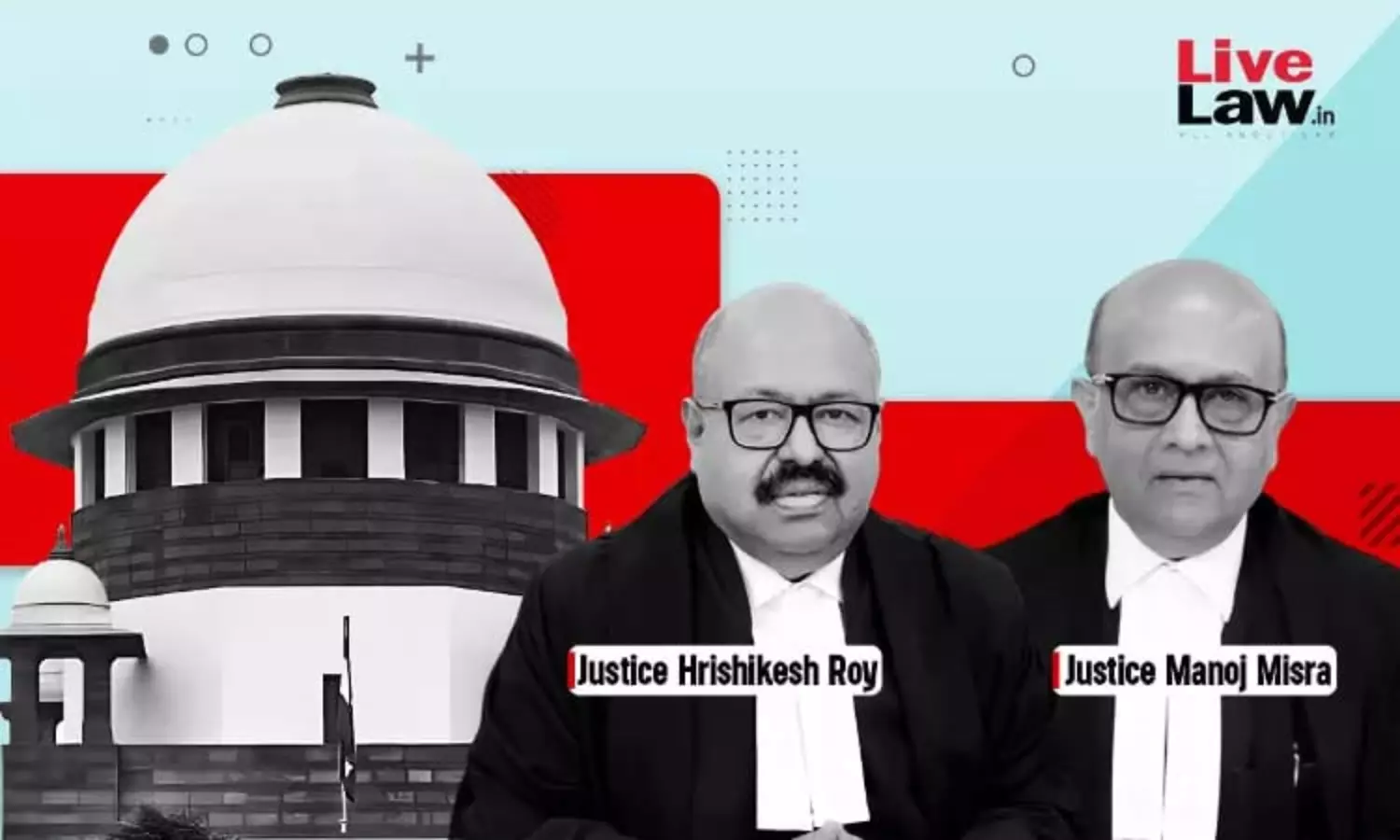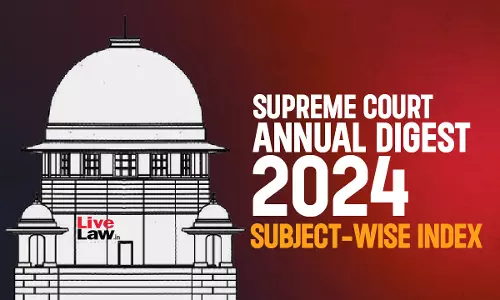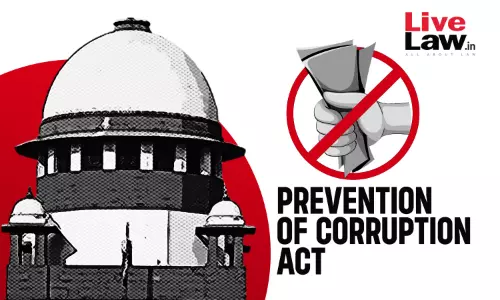Rajasthan Urban Improvement Act | Supreme Court Delivers Split Verdict On Whether Notice Of Land Acquisition Should Be Served On Possessors Whose Names Are Not Reflected In Revenue Records

The Supreme Court recently delivered a split verdict on whether notice must be given to possessors in a land acquisition proceeding by the acquiring authority under the Rajasthan Urban Improvement Act, when their names were not reflected in the revenue records, despite being in possession of the land. The appeal was filed against an order of the Rajasthan High Court that had held that...
The Supreme Court recently delivered a split verdict on whether notice must be given to possessors in a land acquisition proceeding by the acquiring authority under the Rajasthan Urban Improvement Act, when their names were not reflected in the revenue records, despite being in possession of the land.
The appeal was filed against an order of the Rajasthan High Court that had held that land acquisition in question was void since the acquisition notification was issued without serving notice on the landowner.
The matter was considered by a division bench of Justice Manoj Misra and Justice Hrishikesh Roy. Justice Roy dismissed the appeal, while Justice Misra allowed it. Hence, the matter was referred to a larger bench.
Justice Misra was of the view that if the name of the owner is not reflected on the land records, the state is not expected to make a roving enquiry into the same. In such a case, serving notice on the owners entered in the land records is sufficient compliance of the statutory obligation, he held.
However, Justice Roy held that the procedure prescribed under S. 52 of the Rajasthan Urban Improvement Act, 1959 for issuance of notice was not followed in this case. He held that even though land acquisition by acquiring authority is permitted for public purpose, not adhering to the procedure prescribed, could prejudice the landowners and other interested persons. He also observed that the statute must be interpreted in such a way that the person losing the land is protected by procedural safeguards.
Brief Facts
In the case at hand, a suit was instituted against Urban Improvement Trust (appellant before the Apex Court) by the Respondents seeking permanent prohibitory injunction to restrain the Trust from acquiring the land in dispute without following due process of law.
When the matter came up for consideration before the High Court, it took the view that the acquisition notification was issued without notice to the plaintiff and was thus held to be null and void. The HC also held the suit filed for injunction to be maintainable.
The High Court relied on Section 52 of the Rajasthan Urban Improvement Act, 1959 to hold that for compulsory acquisition of land, the procedure prescribed in S. 52 including giving notice and providing an opportunity of hearing to the owner and/or any other interested person must be followed.
Judgement Dismissing The Appeal
Justice Hrishikesh Roy while dismissing the appeal, agreed with the view of the High Court that the procedure prescribed under S. 52 of the Act was not followed. The implication of S. 52 is that notice is required to be served not only to the owner but also to “any other person interested” thereby covering everyone interested in the concerned land, he held.
Finding the land acquisition proceedings to be void ab initio, the Justice Roy observed as under:
“..dispossession without following prescribed statutory process such as giving proper notice, is not only highly prejudicial but it is also a violation of constitutional rights and would thereby vitiate the entire process of land acquisition. Law is well-settled that strict adherence to the mandatory procedural requirements outlined in the legislation is sine-qua-non for the compulsory acquisition of land. Legally conducted acquisition procedures minimize the potential for arbitrary action by the concerned Authority.”
Justice Roy observed that the respondent had purchased the land in dispute and was in peaceful possession of it, until the land acquisition proceedings were initiated. He observed that, even though land acquisition by acquiring authority is permitted for public purpose, not adhering to the procedure prescribed, could prejudice the landowners and other interested persons.
“Acquisition of land for public purpose is permitted by law, but the acquiring authority is required to ensure adherence to the statutory regime for compulsory acquisition. Only by strict adherence to the procedure, a measure of protection is afforded to the landowners and the interested persons, and implicit therein is fairness in the procedure. After all, one is concerned with protection of constitutional rights under Article 300A of the Constitution.”
He added that the statute must be interpreted in such a way that the person losing the land is protected by procedural safeguards:
“There ought to be substantive limits on the power of eminent domain in order to avoid arbitrary action. Strict adherence to procedure is an essential safeguard towards achieving fairness and transparency in the land acquisition process. Such procedures provide land owners and interested persons a fair opportunity to say why their land should not be acquired and also whether the compensation assessed for their lands is adequate. To deny procedural safeguards to the land loser would mean that the doors of justice are shut for him. Such an interpretation, in my view, should be avoided.”
The appellant had contended that the land in dispute being agricultural, the Civil Court had no jurisdiction to entertain the suit. However, on maintainability, Justice Roy observed that Section 9 of the Code of Civil Procedure empowers the Courts to try all civil suits, unless barred.
‘It must now be noted that the litigation in this case has been continuing for 25 years. Empirical Data shows that land disputes clog all levels of courts in India, and according to certain studies, land-related litigations account for the largest set of cases, in terms of both absolute numbers and judicial pendency. For those who are going to lose their land through compulsory acquisition, a key redressal mechanism is to enable them to access courts, at first instance. The aggrieved land loser is often unable to access justice from the judicial system. Therefore, having regard to the limited relief that can be obtained from a revenue court under Tenancy Act, 1955, to deny the land losers access to civil court in my opinion, would aggravate the injustice that would otherwise enure, in all cases of compulsory land acquisition” he said.
Judgement Allowing The Appeal
Justice Misra took the view that the acquisition notification could not be disregarded as void. Once there is no dispute that a notification regarding acquisition of the land was issued and published under sub-section (1) of S. 52 of the Act, a presumption would arise under illustration (e) of Section 114 of the Indian Evidence Act, 1872 that the notification conforms with the provisions of the 1959 Act, he observed.
“A conspectus of the provisions of Chapter VII of the 1959 Act makes it clear that once the acquisition notification is published in the Official Gazette under sub-section (1) of Section 52 of the 1959 Act, by virtue of sub section (4) of Section 52, the land shall, on and from the date of such publication, vest absolutely in the State Government free from all encumbrances and, thereafter, the owner or person interested in the land is entitled to receive compensation Further, as to whom the compensation is payable and the quantum payable are all issues for which a mechanism is in place under the provisions of the 1959 Act,” Justice Misra held.
“..there is a presumption that official acts have been regularly performed (see: Section 114 Illustration (e) of the Indian Evidence Act, 1872), therefore, once a notification under subsection (1) of Section 52 was issued, by virtue of sub-section (4) of Section 52, in my view, a legal fiction with regard to the vesting of land in the State free from all encumbrances from the date of publication of the notification in the Official Gazette would come into play and it cannot be treated as void” he further added.
Justice Misra also observed that since the land records did not reflect the names of the respondents, the State had no way of knowing that they were the owners of the land.
“..it may be noted that assuming the plaintiff and defendant nos. 2 to 4 had purchased a portion of the disputed land, but if they do not get their names mutated in the record of rights, how would the State come to know of their ownership. Therefore, if the land is acquired after serving notice on the recorded owners, as is the case of the appellant, the State’s action in issuing notification under Section 52 (1), in my view, cannot be treated as void. More so, because the State had the power to acquire the land”
Justice Misra was of the view that if the name of the owner is not reflected on the land records, the state is not expected to make a roving enquiry into the same. In such a case, serving notice on the owners entered in the land records is sufficient compliance of the statutory obligation, he observed.
“...in my view, the legal position that emerges is, that if the name of the owner is not entered in the record of rights pertaining to the land proposed to be acquired, there is no legal obligation on the state authorities to make a roving enquiry to find out as to who its actual owner is for effecting service of notice upon him prior to issuance of the acquisition notification. In such circumstances, there would be sufficient compliance of the statutory obligation of serving notice on the owner if the notice is served on the owners entered in the record of rights, unless it is specifically proved that the real owners, other than owners entered in the record of rights, were known to the revenue authorities,” Justice Mishra said.
On the issue of maintainability also, Justice Misra's view differed from that of Justice Roy's. Justice Misra found the suit to not be maintainable as it was barred by Section 207 read with Section 256 of the Rajasthan Tenancy Act, 1955.
"..in my view, though the revenue court may not have had the jurisdiction to annul the notification acquiring the land, which, in any case, was not sought for by the plaintiff, the suit for injunction was maintainable before the Revenue Court by virtue of Entries 8A and 23-C read with Entries 5, 6, 23 and 23A of the Third Schedule of the 1955 Act. Thus, the Suit before the Civil Court was barred by Section 207 read with Section 256 of the 1955 Act" he observed.
Senior Advocate Manoj Swarup appeared for respondents.
Case Title: URBAN IMPROVEMENT TRUST, BIKANER V. GORDHAN DASS (D) THROUGH LRs. & OTHERS, CIVIL APPEAL NO.8411 OF 2014
Citation: 2023 LiveLaw (SC) 930




